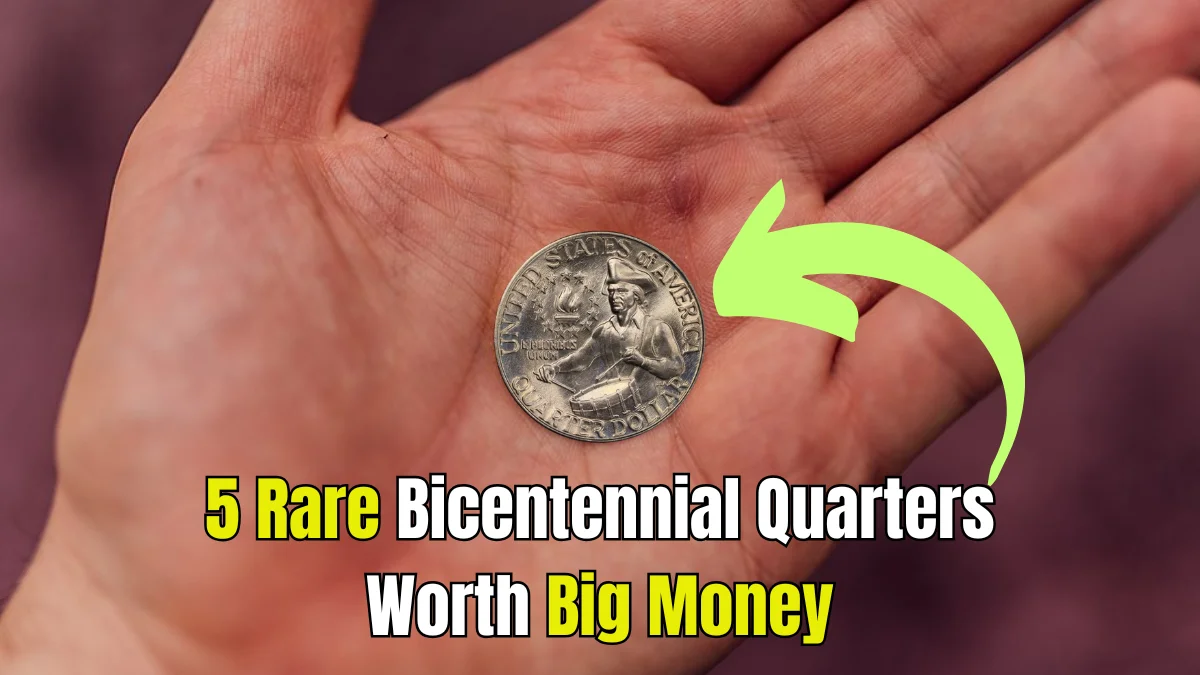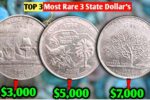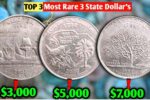5 Rare Bicentennial Quarters Worth Big Money – Are You Holding One?
Most of us have come across the 1976 Bicentennial Quarter at some point. It’s the one with the special drummer boy design on the back and the dual date “1776–1976” on the front. It was released to mark the 200th anniversary of the United States, and millions of them were made for everyday use.
But here’s the twist — not all Bicentennial Quarters are created equal. A small number of them are rare, valuable, and sought after by collectors. Some are worth hundreds, while others can go for thousands of dollars, depending on their condition, rarity, and unique features.
In this article, we’ll look at five rare Bicentennial Quarters that could be hiding in plain sight. Check your pocket change, because you just might have one of these valuable coins without even knowing it.
Overview Table: 5 Rare Bicentennial Quarters Worth Big Money
| Type of Quarter | Special Feature | Estimated Value |
|---|---|---|
| 1976 Silver Bicentennial Proof Quarter | Made of 40% silver, not regular metal | $500 – $3,000 |
| 1976-D Bicentennial Quarter Error Coin | Off-center or double strike errors | $1,000 – $5,000 |
| 1976-S No Mint Mark Proof Quarter | Rare missing mint mark on proof coin | $3,000 – $7,500 |
| 1976 Doubled Die Quarter | Doubling of letters or date on the coin | $1,500 – $4,000 |
| 1976 Off-Metal Strike Quarter | Minted on the wrong metal (planchet) | $10,000+ |
1. 1976 Silver Bicentennial Proof Quarter
While most Bicentennial Quarters are made from a copper-nickel blend, a special version was minted using 40% silver. These silver quarters were part of collector sets and not meant for regular circulation. But over the years, some have made their way into the public’s hands.
How to Spot It:
-
The edge is all silver, not copper-colored.
-
It may have an “S” mint mark if it was made in San Francisco.
-
The coin feels slightly heavier than a regular quarter.
2. 1976-D Bicentennial Quarter Error Coin
Error coins are among the most collected types, and the Bicentennial Quarter has its fair share. Some Denver-minted quarters (“D” mint mark) were struck off-center, or received a double strike, which creates overlapping images.
What to Look For:
-
The design is not properly centered on the coin.
-
You might see part of another image on top of the first one.
-
Sometimes parts of the words are missing or distorted.
3. 1976-S No Mint Mark Proof Quarter
San Francisco usually adds an “S” mint mark to their proof coins. But in a few very rare cases, this mint mark was accidentally left off. If a 1976 proof quarter is shiny like a mirror but has no mint mark, it could be one of these rarities.
How to Spot It:
-
Extremely shiny, mirror-like surface (proof finish).
-
No mint mark under the date.
-
Usually found in old coin sets or proof packs.
4. 1976 Doubled Die Quarter
This coin has a minting mistake where the design was stamped twice, but slightly off. This causes the letters and numbers to look thicker, shadowed, or slightly blurred.
Where to Look:
-
Look at the words “IN GOD WE TRUST” and the date “1776–1976.”
-
Check the back as well — the word “QUARTER DOLLAR” may appear doubled.
Estimated Value: $1,500 to $4,000, depending on the clarity of the doubling.
5. 1976 Off-Metal Strike Quarter
This is the rarest kind — a Bicentennial Quarter that was struck on a coin blank meant for a different denomination or country. For example, one might be minted on a foreign coin planchet or even on a penny-sized blank by mistake.
Clues to Watch For:
-
The coin looks smaller or larger than normal.
-
It’s lighter or heavier than a regular quarter.
-
The metal color is different — like brown, gray, or yellow.
These coins are extremely rare and valuable because they shouldn’t exist in the first place.
How to Know If You Have a Rare Bicentennial Quarter
It’s easy to overlook these special coins if you’re not sure what to look for. Here are a few simple steps to help you check:
-
Grab a magnifying glass. It helps with small details and spotting mint marks.
-
Examine the edge. Silver coins have no copper line around the edge.
-
Check the design. Look for any unusual features, doubled text, or off-center images.
-
Weigh the coin. If it’s heavier or lighter than normal, it might be off-metal.
-
Compare it online or with a coin dealer. Don’t guess — get expert advice if you think you’ve found something rare.
FAQs About Rare Bicentennial Quarters
1. Are all 1976 Bicentennial Quarters valuable?
No, most are worth just 25 cents. Only certain versions with rare errors, silver content, or unique features have high value.
2. Can I find these quarters in circulation today?
Yes, it’s possible. People sometimes spend them without knowing their value, especially older collections passed down in families.
3. Should I clean my old coins before selling them?
No! Cleaning coins can damage them and reduce their value. Always show them in their original condition.
4. Where can I sell a rare quarter if I find one?
Try a local coin shop, a coin show, or an online auction. Make sure you get the coin graded first by a professional service like PCGS or NGC.
5. How do I know if my Bicentennial Quarter is silver?
Look at the edge — if it’s all silver with no copper stripe, it might be a silver quarter. You can also weigh it or get it tested by a coin expert.
Final Thoughts
The 1976 Bicentennial Quarter is a common coin with an uncommon secret — some of them are worth big money. From silver versions to rare minting mistakes, these coins have become exciting finds for collectors and casual coin hunters alike.
You don’t need to be a professional to get lucky. Just take a few minutes to check your change, your old jars, or that forgotten box of coins in your attic. You might already be holding something worth thousands.




